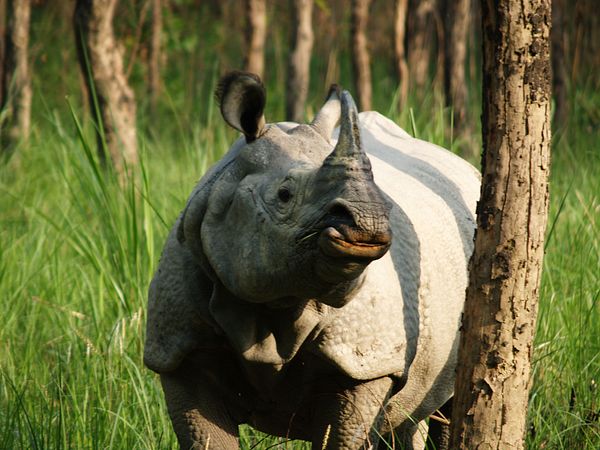Introduction:
Nestled in the lap of the Himalayas, Nepal is not only renowned for its majestic mountains and rich cultural heritage but also for its incredible biodiversity. The country's unique geographical diversity, ranging from the snow-capped peaks to the lush jungles of the Terai region, supports a wide array of wildlife. However, like many other countries, Nepal faces challenges in preserving its natural heritage and protecting endangered species. In this short blog, we will delve into Nepal's wildlife conservation efforts and the measures taken to safeguard its endangered wildlife.
1. **National Parks and Protected Areas:**
Nepal boasts an extensive network of national parks and protected areas, covering approximately 28,000 square kilometers, or 23% of its total land area. These protected regions serve as vital habitats for numerous endangered species. Some of the well-known parks include Chitwan National Park, Bardia National Park, and Sagarmatha National Park, home to the elusive snow leopard and the endangered Bengal tiger.
2. **Community-Based Conservation:**
Recognizing the importance of involving local communities in conservation efforts, Nepal has embraced the concept of community-based conservation. Many protected areas collaborate with local communities through programs like buffer zone management, which incentivizes conservation by allowing communities to benefit from tourism revenue and sustainable resource management.
3. **Anti-Poaching Initiatives:**
Poaching remains a significant threat to endangered wildlife in Nepal. To combat this issue, dedicated anti-poaching units have been established within national parks and protected areas. These units work tirelessly to prevent illegal hunting and trafficking of endangered species, such as the one-horned rhinoceros and Asian elephants.
4. **Conservation Through Tourism:**
Responsible wildlife tourism plays a vital role in conservation efforts. Nepal's national parks and protected areas offer eco-tourism opportunities that promote wildlife conservation. Guided wildlife safaris, birdwatching tours, and educational programs create awareness about the importance of protecting endangered species.
5. **Translocation and Rehabilitation Programs:**
Nepal has undertaken successful translocation and rehabilitation programs to revive endangered species. For instance, the Red Panda Translocation Project aims to relocate red pandas to suitable habitats, safeguarding them from threats and boosting their populations.
6. **Global Collaboration:**
Nepal actively participates in global conservation initiatives and collaborates with international organizations to address pressing wildlife conservation issues. These partnerships help secure funding, knowledge exchange, and technical expertise for conservation projects.
Conclusion:
Nepal's wildlife conservation efforts showcase the country's dedication to protecting its rich natural heritage and unique biodiversity. By establishing national parks, involving local communities, combatting poaching, promoting responsible tourism, and collaborating with global organizations, Nepal has taken significant strides in safeguarding endangered species. These collective efforts not only preserve the nation's unique wildlife but also contribute to maintaining the ecological balance and promoting sustainable development. As travelers and nature enthusiasts, let us support and celebrate Nepal's commitment to wildlife conservation, ensuring that future generations can witness the awe-inspiring beauty of its endangered species in their natural habitats.

/https://tf-cmsv2-smithsonianmag-media.s3.amazonaws.com/filer_public/66/61/66617008-3a65-4c69-8fe3-b6be8039f775/gettyimages-1226167797.jpg)

No comments:
Post a Comment
Thank u very much for your valueable comment.